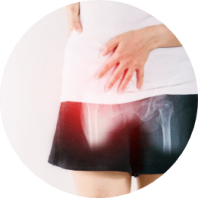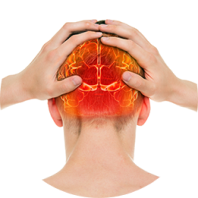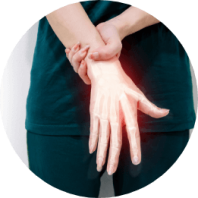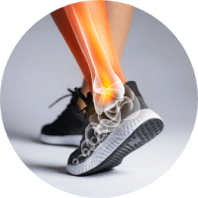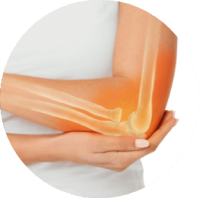Tennis
Elbow
- Home
- Conditions We Treat
- Elbow
- Tennis Elbow
What is tennis elbow?
The elbow plays a crucial role in upper limb movement, contributing to the strength, stability, and flexibility required for daily tasks. Whether lifting, twisting the forearm, or gripping objects, the coordinated action of the elbow joint and its surrounding muscles enables smooth and functional movement.
Tennis elbow, medically known as lateral epicondylitis, is a condition characterised by pain and tenderness on the outer aspect of the elbow. It occurs when the tendons that attach the forearm muscles to the lateral epicondyle (the bony prominence on the outside of the elbow) become inflamed or degenerate due to overuse. The discomfort is often aggravated by gripping, lifting, or repetitive wrist extension.
Despite its name, tennis elbow is not limited to tennis players. While it is common in racquet sport athletes, it can affect anyone whose occupation or activities involve repetitive movements of the forearm, such as manual labourers, painters, carpenters, or individuals who spend prolonged periods using a computer mouse or keyboard.
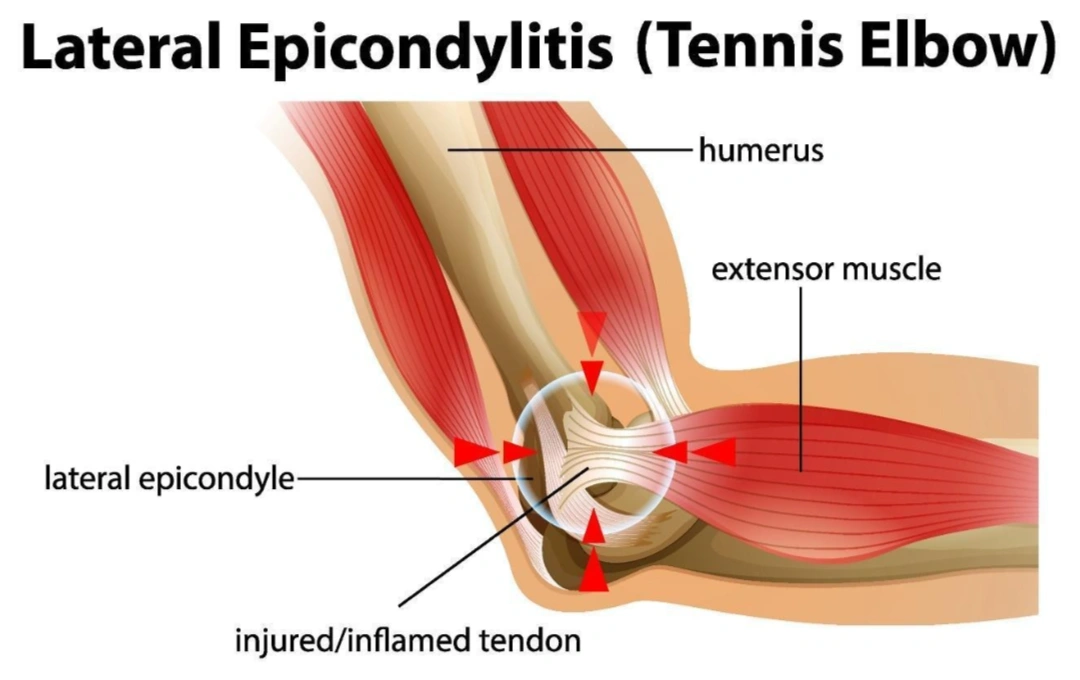
What causes tennis elbow?
Tennis elbow develops when the tendons that attach the forearm muscles to the lateral epicondyle of the elbow become overloaded. This overuse often leads to small tears in the tendon, resulting in inflammation, pain, and reduced function over time. While the condition is commonly associated with racquet sports, it can occur in a wide range of occupations and activities involving repetitive arm and wrist motion.
Common contributing factors include:
- Repetitive movements — continuous gripping, twisting, or lifting, especially with the wrist extended, places strain on the forearm extensor tendons. These activities are typical in sports, manual labour, and certain hobbies.
- Improper technique or ergonomics — poor posture, incorrect technique during sports or work-related tasks, or using tools that are not well-suited to the hand can increase mechanical stress on the elbow. Inadequate warm-up or stretching before activity may further increase risk.
- Unaccustomed activity — sudden increases in activity intensity or duration, such as starting a new workout routine, gardening for prolonged periods, or undertaking DIY tasks, can overload the tendon.
- Age-related degeneration — most cases occur in individuals between the ages of 35 and 50. With age, tendons naturally lose some of their elasticity and ability to repair, making them more vulnerable to injury.
- Occupational risk — jobs that involve repetitive hand and wrist motions, such as carpentry, plumbing, painting, typing, or cooking, can predispose individuals to developing tennis elbow.
- Vibration exposure — frequent use of vibrating tools, such as drills or power sanders, can also contribute to tendon strain.
Although it is a localised condition, tennis elbow often reflects a mismatch between tendon load and recovery. Early recognition and adjustment of activity levels are key to preventing progression.
What are the symptoms of tennis elbow?
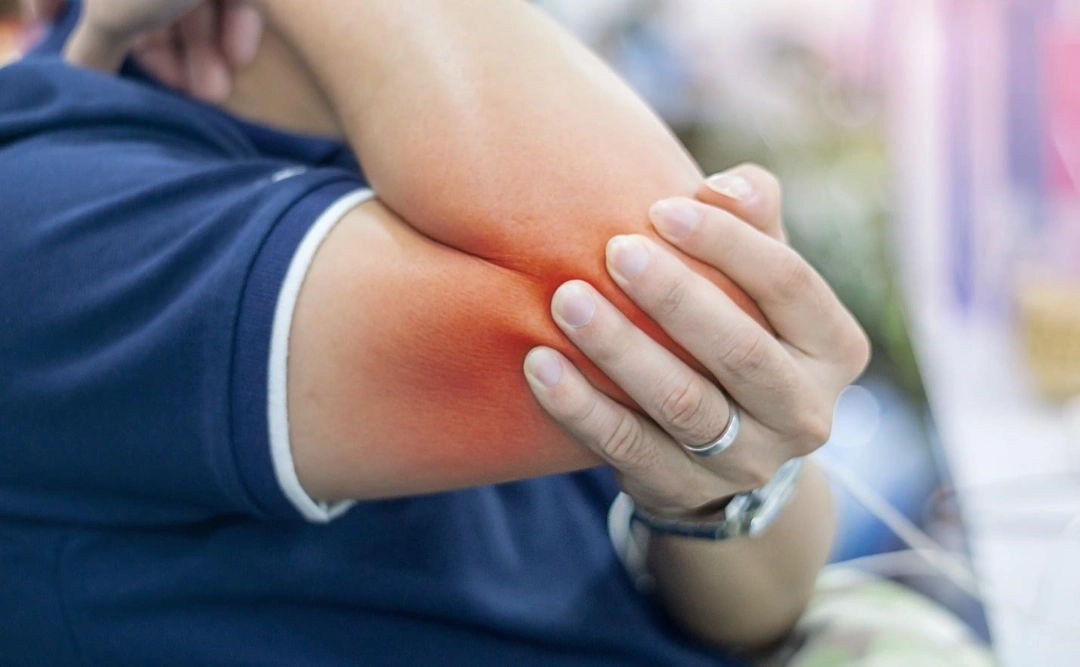
Tennis elbow typically presents with a combination of pain, weakness, and reduced function in the arm. The symptoms may develop gradually and often worsen with continued use of the affected arm, especially during tasks that involve gripping or wrist extension.
Common signs and symptoms include:
- Pain or tenderness over the outer part of the elbow (lateral epicondyle)
- Discomfort that may radiate down the forearm towards the wrist
- A weakened grip, especially when holding objects like a mug, tool, or racquet
- A burning or sharp sensation around the elbow, particularly during movement
- Stiffness or reduced range of motion in the elbow
- Mild swelling around the joint
- Difficulty fully straightening or extending the arm
These symptoms are typically aggravated by certain everyday actions, such as:
- Gripping items firmly (e.g., holding a racquet, or shaking hands)
- Lifting or carrying objects, especially with the palm facing downward
- Opening jars or turning doorknobs
- Raising the hand or bending the wrist backwards
- Repetitive typing or use of a computer mouse
Symptoms may initially appear mild but can worsen over time without appropriate rest or treatment.
Who is at risk of developing tennis elbow in Singapore?
While tennis elbow is not exceedingly common in Singapore, certain individuals are more likely to develop the condition due to lifestyle, physical activity, or biological factors. Understanding these risk factors can help identify those who may benefit from early preventive strategies.
Key risk groups include:
- Adults aged 40 to 60 — although tennis elbow can affect individuals of any age, it is more frequently seen in middle-aged adults, particularly those engaged in physical or repetitive work.
- Athletes — those who participate in sports involving repeated arm movements, such as tennis, squash, badminton, golf, and throwing sports are at higher risk due to the strain placed on the forearm tendons.
- Occupational risk — jobs that require repetitive hand, wrist, or forearm motions significantly increase the likelihood of tendon overuse. This includes carpenters, plumbers, chefs, butchers, manicurists, painters, and mechanics.
- Women — some research suggests women may be slightly more prone to developing tennis elbow, possibly due to differences in joint structure and tendon loading during repetitive tasks.
- Individuals with higher BMI — obesity is associated with increased mechanical stress on joints and tendons, which may impair tendon healing and raise the risk of overuse injuries.
- Smokers — smoking adversely affects blood flow and tissue repair, compromising tendon health and making recovery from repetitive strain slower and less effective.
How is tennis elbow diagnosed?
Tennis elbow is primarily diagnosed through a detailed clinical assessment. Your doctor will begin by reviewing your symptoms, medical history, and any activities that may have contributed to the pain. The goal is to determine whether the discomfort stems from the outer elbow tendons or another underlying issue.
During the physical examination, the doctor will:
- Palpate the outer part of the elbow to assess for tenderness
- Ask you to perform specific movements, such as extending your wrist or fingers against resistance, to reproduce pain
- Evaluate the range of motion in your elbow, wrist, and shoulder
- Check for signs of nerve involvement or other joint conditions
In most cases, a clinical examination is sufficient to confirm the diagnosis. However, if symptoms are severe, persistent, or atypical, additional tests may be recommended to rule out other conditions:
- Ultrasound — can detect tendon tears, inflammation, or degeneration
- Magnetic Resonance Imaging (MRI) — may be used if the diagnosis is uncertain or if other joint or nerve conditions are suspected
- X-rays — generally not required for diagnosing tennis elbow but may help exclude other causes of elbow pain, such as fractures, sprains or arthritis.
What are the treatment options for tennis elbow in Singapore?
The treatment approach for tennis elbow depends on the severity of symptoms and how the condition has progressed. Most cases respond well to non-surgical measures, particularly when addressed early. However, in more persistent or severe cases, surgical options may be considered.
Conservative Treatment Options
For mild to moderate cases, non-invasive interventions are usually effective. These may include:
- Rest and activity modification — avoiding activities that strain the forearm tendons gives the tissue time to recover. Simple adjustments to daily tasks can help prevent further irritation.
- Bracing or elbow straps — a counterforce brace worn just below the elbow can reduce stress on the affected tendon during movement, promoting healing.
- Ice application — applying cold packs to the outer elbow helps reduce inflammation and provides short-term pain relief, particularly after activity.
- Pain relief medication — non-steroidal anti-inflammatory drugs (NSAIDs), such as ibuprofen, may be recommended to relieve pain and inflammation.
- Physiotherapy — a structured physiotherapy programme can be highly effective. This includes exercises to strengthen the forearm muscles, improve flexibility, and support tendon recovery.
Surgical Treatment Options
If symptoms persist despite conservative management for six to twelve months, surgery may be advised to address underlying tendon damage. Surgical options include:
- Tendon debridement — involves removing degenerated or scarred tendon tissue to stimulate healthy regrowth.
- Tendon release — in some cases, detaching the affected tendon from the bone can relieve tension and pain.
Both procedures may be performed through open surgery or minimally invasive techniques, depending on the individual case.
Rehabilitation and Recovery
Rehabilitation plays a vital role in long-term recovery, whether treatment is conservative or surgical. It helps restore strength, prevent stiffness, and reduce the risk of recurrence. Key components of rehabilitation often include:
- Range of motion exercises — gentle stretches to maintain flexibility in the elbow and wrist.
- Strengthening exercises — focused on improving muscle support around the forearm and wrist to offload stress from the tendons.
- Gradual return to activity — a phased approach to resuming normal work or sport ensures that the elbow adapts progressively without reinjury.
With appropriate treatment and commitment to rehabilitation, most individuals make a full recovery and regain pain-free function in the affected arm.
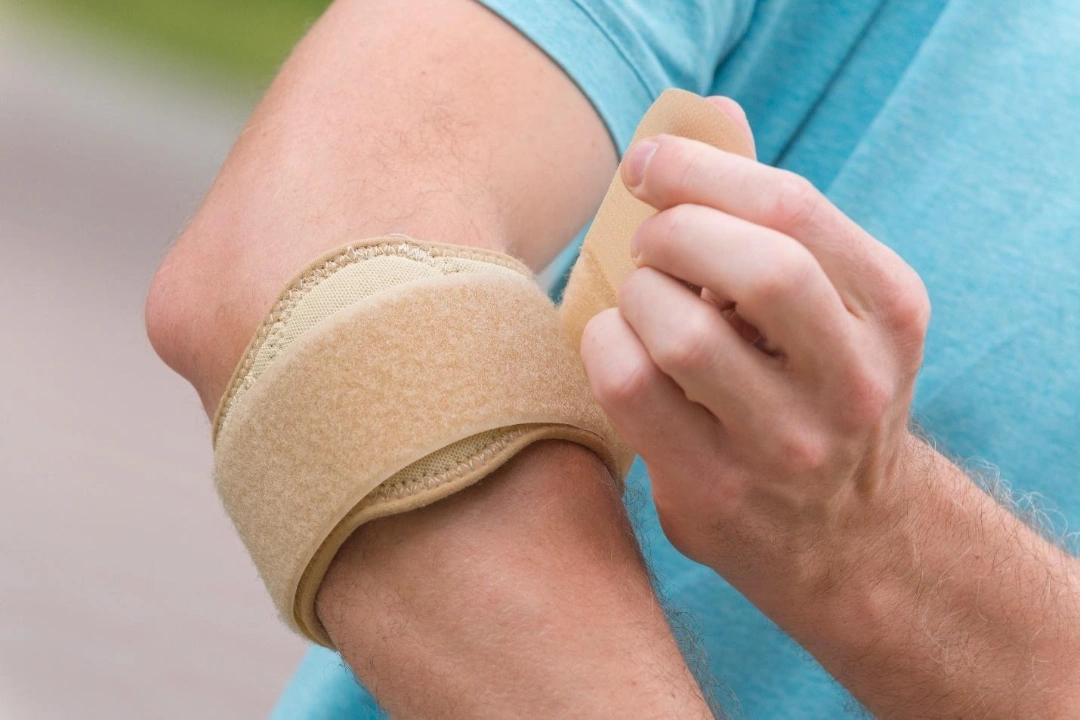
Summary
Tennis elbow, or lateral epicondylitis, is a common overuse injury affecting the tendons on the outer part of the elbow, typically caused by repetitive wrist and forearm movements. It often presents with pain, weakness, and difficulty performing everyday tasks such as gripping or lifting. While it is frequently seen in athletes and manual workers, anyone engaged in repetitive arm activity may be at risk.
Diagnosis is usually based on clinical examination, with imaging used in persistent or unclear cases. Most cases respond well to conservative treatments such as rest, physiotherapy, bracing, and medication, though surgery may be required for more severe or prolonged symptoms. A structured rehabilitation plan is essential for full recovery and preventing recurrence.
If you are experiencing persistent elbow pain or suspect you may have tennis elbow, schedule a consultation with Cove Orthopaedics for a personalised assessment and personalised treatment plan.
Frequently asked questions
How long does a tennis elbow usually take to heal?
Recovery can take anywhere from 6 to 12 months. Many cases of tennis elbow resolve naturally with rest and conservative care.
Can tennis elbow heal without treatment?
Yes, tennis elbow can improve over time without formal treatment. However, rest and physiotherapy can help speed up recovery and reduce the risk of recurrence.
Is a tennis elbow the same as a golfer’s elbow?
No, tennis elbow affects the outer part of the elbow, while golfer’s elbow affects the inner side. They involve different tendons and movement patterns.
Do elbow straps help with tennis elbow?
Yes, wearing a counterforce strap or brace just below the elbow can reduce strain on the affected tendons and ease discomfort during activity.
Are steroid injections effective for tennis elbow?
Steroid injections may provide short-term relief for tennis elbow but are not usually recommended for long-term recovery, as they can delay tendon healing.
What role does physiotherapy play in treating tennis elbow?
Physiotherapy helps strengthen the forearm muscles, improve flexibility, and support tendon healing. Many patients see significant improvement within a few weeks.
Are newer treatments like PRP or stem cell therapy useful for tennis elbow?
Emerging treatments like platelet-rich plasma (PRP) and stem cell therapy have been explored for tennis elbow, but strong evidence supporting their effectiveness is still limited.
Conditions We Treat
